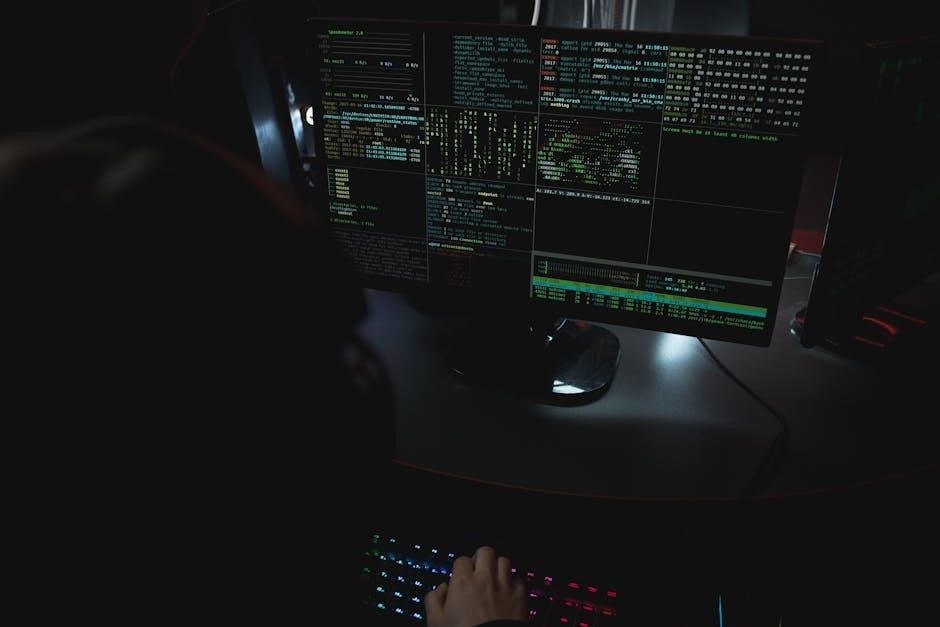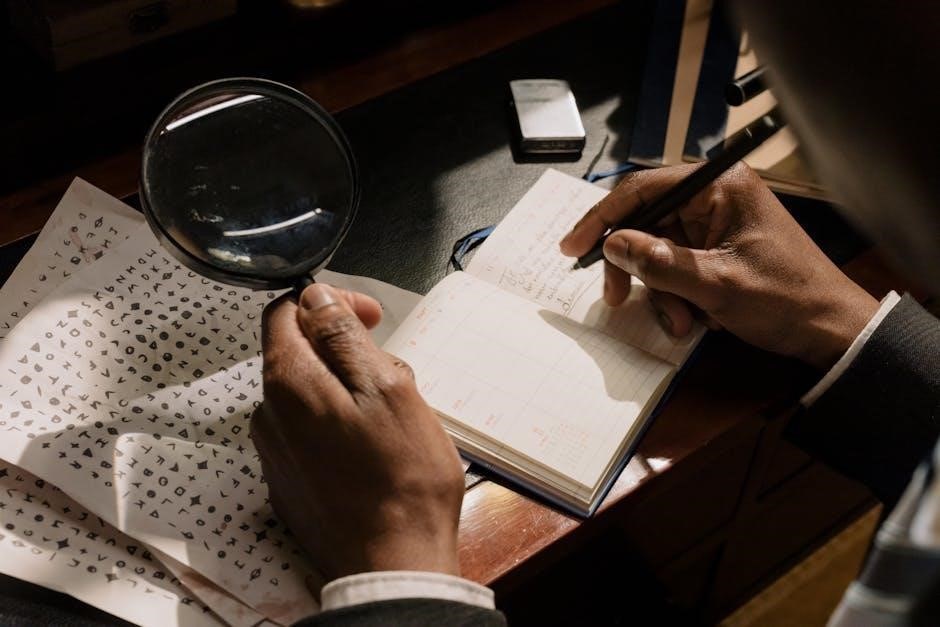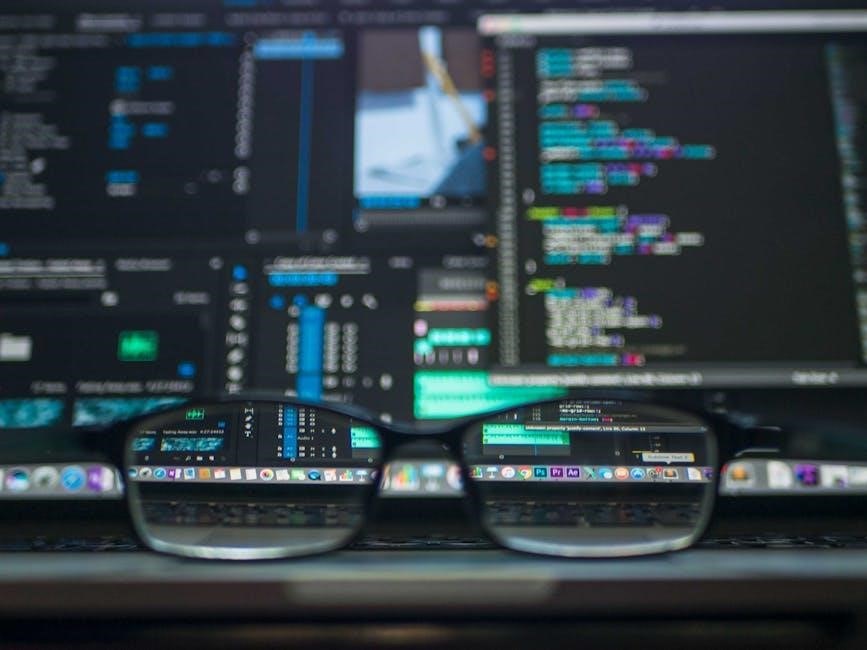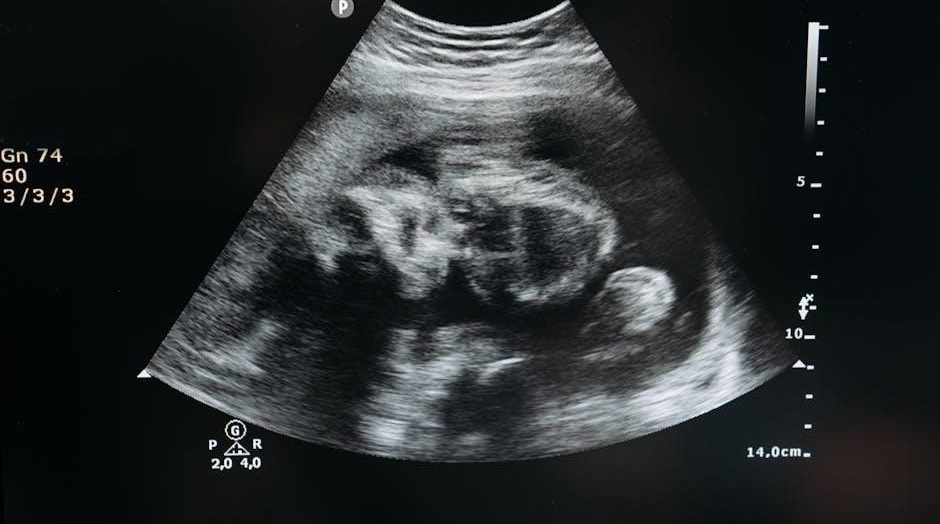The CPT code for ultrasound-guided liver biopsy is essential for accurate medical billing and documentation. It ensures proper reimbursement for this diagnostic procedure.
Ultrasound guidance enhances precision, reducing risks during liver tissue sampling. The procedure is commonly used to diagnose liver diseases, making it a vital tool in hepatology.
Specific CPT codes, such as 47000 and 76942, are used to report liver biopsy and ultrasound guidance, ensuring clarity in medical coding and billing processes.
Overview of CPT Codes and Their Importance in Medical Billing
CPT (Current Procedural Terminology) codes are standardized codes used to describe medical, surgical, and diagnostic services. They play a crucial role in medical billing, ensuring accurate documentation and reimbursement for healthcare providers. For procedures like ultrasound-guided liver biopsy, CPT codes help standardize the billing process, making it easier for insurers to understand the services provided. These codes also facilitate data collection for healthcare quality improvement and research. Accurate use of CPT codes ensures compliance with billing regulations and helps avoid claim rejections. They are essential for maintaining transparency and efficiency in healthcare billing systems.
Specific CPT Codes Related to Ultrasound-Guided Liver Biopsy
For ultrasound-guided liver biopsy, specific CPT codes are used to accurately report the procedure. CPT code 47000 is used for a needle biopsy of the liver, while CPT code 47001 applies when the biopsy is performed during another major procedure. Additionally, CPT code 76942 is used to report the ultrasound guidance for needle placement. These codes ensure precise billing and documentation, distinguishing between standalone biopsies and those performed alongside other procedures. Using the correct codes is essential for proper reimbursement and compliance with medical billing standards. They also help in tracking the utilization of ultrasound guidance in liver biopsy procedures.

CPT Code 47000: Biopsy of Liver, Needle
CPT code 47000 refers to a percutaneous needle biopsy of the liver, performed using a hollow bore needle. It is used for standalone procedures, not requiring imaging guidance.
Definition and Scope of CPT Code 47000
CPT code 47000 describes a percutaneous needle biopsy of the liver performed using a hollow bore needle. It is used for obtaining liver tissue for diagnostic purposes. This code applies to standalone procedures and does not include imaging guidance, such as ultrasound. The biopsy is typically performed under local anesthesia and involves inserting a needle through the skin to collect liver tissue. It is essential to document the procedure accurately for proper billing and reimbursement. This code is commonly used for evaluating liver diseases, such as hepatitis or cirrhosis, and does not require additional imaging codes when performed without guidance.
Clinical Indications for Using CPT Code 47000
CPT code 47000 is used for percutaneous liver biopsies to evaluate liver disease. Indications include abnormal liver function tests, suspected hepatitis, cirrhosis, or liver masses. It is also used to assess liver damage from toxins or infections. The procedure is diagnostic, helping identify conditions like fibrosis or cancer. It is commonly performed in patients with risk factors, such as alcohol use or viral hepatitis exposure. The biopsy provides tissue samples for histopathological examination, guiding further treatment. Accurate documentation ensures proper coding and reimbursement for this essential diagnostic procedure.

CPT Code 47001: Biopsy of Liver, Needle; When Done for Indicated Purpose at Time of Other Major Procedure
CPT code 47001 is used when a liver biopsy is performed during another major procedure. It is listed separately and applies to needle biopsies for indicated purposes.
Differences Between CPT Codes 47000 and 47001
CPT code 47000 is used for a standalone liver needle biopsy, while 47001 is reserved for biopsies performed during another major procedure. Code 47001 is listed separately and billed in addition to the primary procedure code, reflecting its secondary role. The key difference lies in the clinical context: 47000 is for isolated biopsies, whereas 47001 applies when the biopsy is incidental or supplementary to a more extensive surgical intervention. This distinction ensures accurate billing and reimbursement for varying clinical scenarios involving liver biopsies.
Appropriate Use of CPT Code 47001 in Clinical Practice
CPT code 47001 is specifically used when a liver biopsy is performed during another major surgical procedure. It is billed separately from the primary procedure, ensuring accurate reimbursement. This code applies when the biopsy is incidental or supplementary to a larger operation, such as liver resection or abdominal surgery. Documentation must clearly indicate that the biopsy was performed for a specific clinical purpose during the primary procedure. Proper use of 47001 avoids coding errors and ensures compliance with billing guidelines, reflecting the additional work involved in performing the biopsy alongside other major interventions.
Ultrasound Guidance in Liver Biopsy Procedures
Ultrasound guidance enhances the accuracy and safety of liver biopsy by providing real-time visualization. It helps in targeting the correct tissue and minimizing complications, ensuring precise needle placement.
Role of Ultrasound in Guiding Liver Biopsy
Ultrasound plays a critical role in guiding liver biopsy by providing real-time visualization, ensuring precise needle placement, and minimizing complications. It helps identify the optimal biopsy site, avoiding major vessels and reducing the risk of bleeding. Ultrasound guidance is particularly useful for patients with challenging anatomy or those at higher risk of complications. The procedure allows for accurate targeting of liver tissue, enhancing diagnostic accuracy. It is also essential for monitoring the entire biopsy process, ensuring patient safety and procedural efficiency. This imaging modality is widely preferred due to its non-invasive nature, cost-effectiveness, and ability to provide immediate feedback during the procedure.
CPT Code 76942: Ultrasonic Guidance for Needle Placement
CPT code 76942 is used to report ultrasonic guidance for needle placement during procedures like liver biopsy. This code specifically covers the imaging portion of the procedure, ensuring accurate needle placement. It is billed separately from the biopsy procedure itself, such as CPT code 47000. The use of ultrasound guidance enhances precision, reducing complications and improving diagnostic outcomes. This code is essential for documentation, as it reflects the technical skill and resources required for image-guided interventions. Proper coding ensures accurate reimbursement for the ultrasonic guidance component of the biopsy. This code is widely applicable to various needle-based procedures beyond liver biopsies, making it a critical component in medical billing for imaging-guided interventions.

Documentation and Billing Guidelines for Ultrasound-Guided Liver Biopsy
Accurate documentation is critical for proper coding and reimbursement of ultrasound-guided liver biopsy procedures. Ensure all CPT codes, such as 47000 and 76942, are correctly reported to reflect the procedure performed, including imaging guidance. Detailed records of medical necessity, patient consent, and procedure specifics are essential. Adherence to payer policies and coding guidelines ensures timely and accurate reimbursement. Proper documentation also supports compliance with regulatory requirements, minimizing billing errors and audits.
Importance of Accurate Documentation for Reimbursement
Accurate documentation is vital for proper reimbursement of ultrasound-guided liver biopsies. It ensures that all CPT codes, such as 47000 and 76942, are correctly reported, reflecting the procedure performed, including imaging guidance. Detailed records of medical necessity, patient consent, and procedure specifics are essential for billing. Proper documentation supports compliance with regulations and minimizes billing errors and audits. It also aids in tracking patient outcomes and improving care quality. Clear documentation ensures that coders can assign the correct codes, preventing denied claims and financial losses. Thus, accurate documentation is crucial for efficient healthcare operations and maintaining compliance with billing standards.
Common Coding Errors to Avoid
Common coding errors in ultrasound-guided liver biopsies include incorrect use of CPT codes and improper reporting of imaging guidance. Failing to report both liver biopsy codes (e.g., 47000) and ultrasound guidance codes (e.g., 76942) can lead to underpayment. Another mistake is not distinguishing between primary and secondary procedures, incorrectly using 47001 instead of 47000. Additionally, omitting documentation of medical necessity or failing to link procedures to diagnoses can result in denied claims. Coders should ensure accurate and complete documentation to avoid these errors, ensuring compliance and proper reimbursement. Regular training and updates on coding guidelines can help prevent such mistakes.

Clinical Indications and Contraindications for Ultrasound-Guided Liver Biopsy
Ultrasound-guided liver biopsy is a minimally invasive procedure indicated for diagnosing liver disease, suspected malignancy, and abnormal liver function tests. Contraindications include coagulopathy and significant ascites.
Medical Necessity and Patient Selection Criteria
Ultrasound-guided liver biopsy is medically necessary for diagnosing liver diseases, such as hepatitis, cirrhosis, or suspected malignancy. It is indicated when clinical findings, lab results, or imaging suggest liver pathology requiring tissue confirmation.
Patient selection criteria include stable coagulation status, absence of severe ascites, and ability to comply with procedure instructions. Contraindications like uncorrected coagulopathy or severe liver dysfunction must be evaluated to ensure patient safety and procedural success.
Contraindications and Risks Associated with the Procedure
Contraindications for ultrasound-guided liver biopsy include uncorrected coagulopathy, severe ascites, and presence of intrauterine shunts. Patients with severe liver dysfunction or hemodynamic instability are also at higher risk.
Possible risks involve bleeding, infection, or accidental injury to adjacent organs. Rare complications include hemoperitoneum or bile peritonitis. Proper patient screening and adherence to guidelines minimize these risks.

Comparison of Ultrasound-Guided vs. Other Imaging-Guided Liver Biopsy Methods
Ultrasound-guided liver biopsy is preferred for its real-time imaging and cost-effectiveness. It reduces radiation exposure and complications compared to CT or MRI-guided methods, which are more expensive and complex.
Advantages and Limitations of Ultrasound Guidance
Ultrasound guidance offers real-time imaging, enhancing precision during liver biopsy. It is cost-effective, reduces radiation exposure, and minimizes complications. However, it may be less effective in obese patients or those with severe liver disease, limiting visibility. Additionally, ultrasound-guided biopsies may not provide detailed imaging for deep tissue or complex cases, where CT or MRI might be preferable. Despite these limitations, ultrasound remains a preferred method for its simplicity and safety in most clinical scenarios. Its non-invasive nature and ability to guide needle placement accurately make it a valuable tool in diagnostic hepatology. Regular updates ensure its effectiveness in modern medical practices.
Comparison with CT and MRI-Guided Liver Biopsy
Ultrasound-guided liver biopsy is often compared to CT and MRI-guided methods. Ultrasound offers cost-effectiveness and portability but may lack depth penetration for obese patients or complex cases. CT provides superior imaging for deep lesions but involves radiation exposure and higher costs. MRI offers detailed tissue characterization without radiation but is less accessible and more expensive. Each modality has specific advantages, with ultrasound being preferred for superficial lesions and routine biopsies, while CT and MRI are reserved for challenging cases requiring precise imaging. The choice depends on patient factors, lesion characteristics, and institutional resources, ensuring optimal diagnostic outcomes. This comparison aids in selecting the most appropriate guidance method.

Future Trends and Updates in CPT Coding for Ultrasound-Guided Procedures
Emerging technologies like augmented reality and advanced imaging are expected to influence CPT code updates for ultrasound-guided procedures, ensuring precision and efficiency in medical billing and coding practices.
Expected Changes in CPT Codes for 2024 and Beyond
For 2024, updates to CPT codes for ultrasound-guided procedures are anticipated, with a focus on enhancing specificity. New codes may address advanced imaging techniques, such as augmented reality-guided biopsies. The AMA annually reviews and refines codes to align with technological advancements. Expect revisions to codes like 76942, which currently covers ultrasound guidance for needle placement. Additional codes may be introduced for complex cases requiring multi-modal imaging. These changes aim to improve documentation accuracy and reduce billing errors. Staying informed about updates is crucial for healthcare providers to ensure compliance and proper reimbursement for ultrasound-guided liver biopsy procedures.
Impact of Emerging Technologies on Liver Biopsy Coding
Emerging technologies like augmented reality and advanced imaging systems are reshaping liver biopsy coding. These innovations enhance precision and safety, potentially requiring new CPT codes. For instance, augmented reality-guided biopsies may demand specific codes to reflect their unique procedural aspects. Additionally, MRI-guided liver biopsies are gaining traction, necessitating updates to existing codes or the creation of new ones. As these technologies evolve, the medical billing landscape must adapt to ensure accurate reimbursement. Staying abreast of these advancements is crucial for coders to maintain compliance and reflect modern practices in ultrasound-guided liver biopsy procedures. This ensures efficient and precise coding for emerging techniques.
